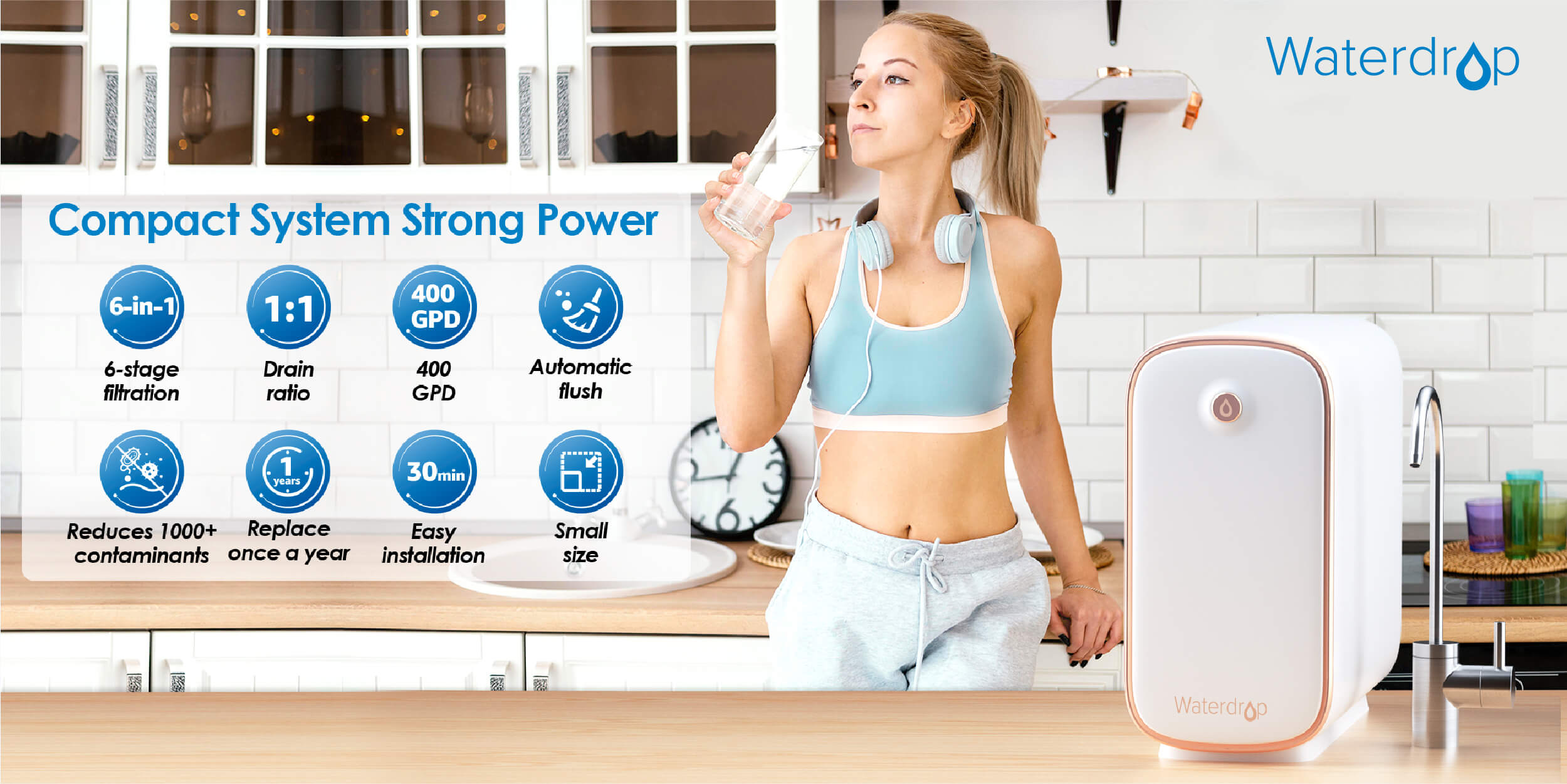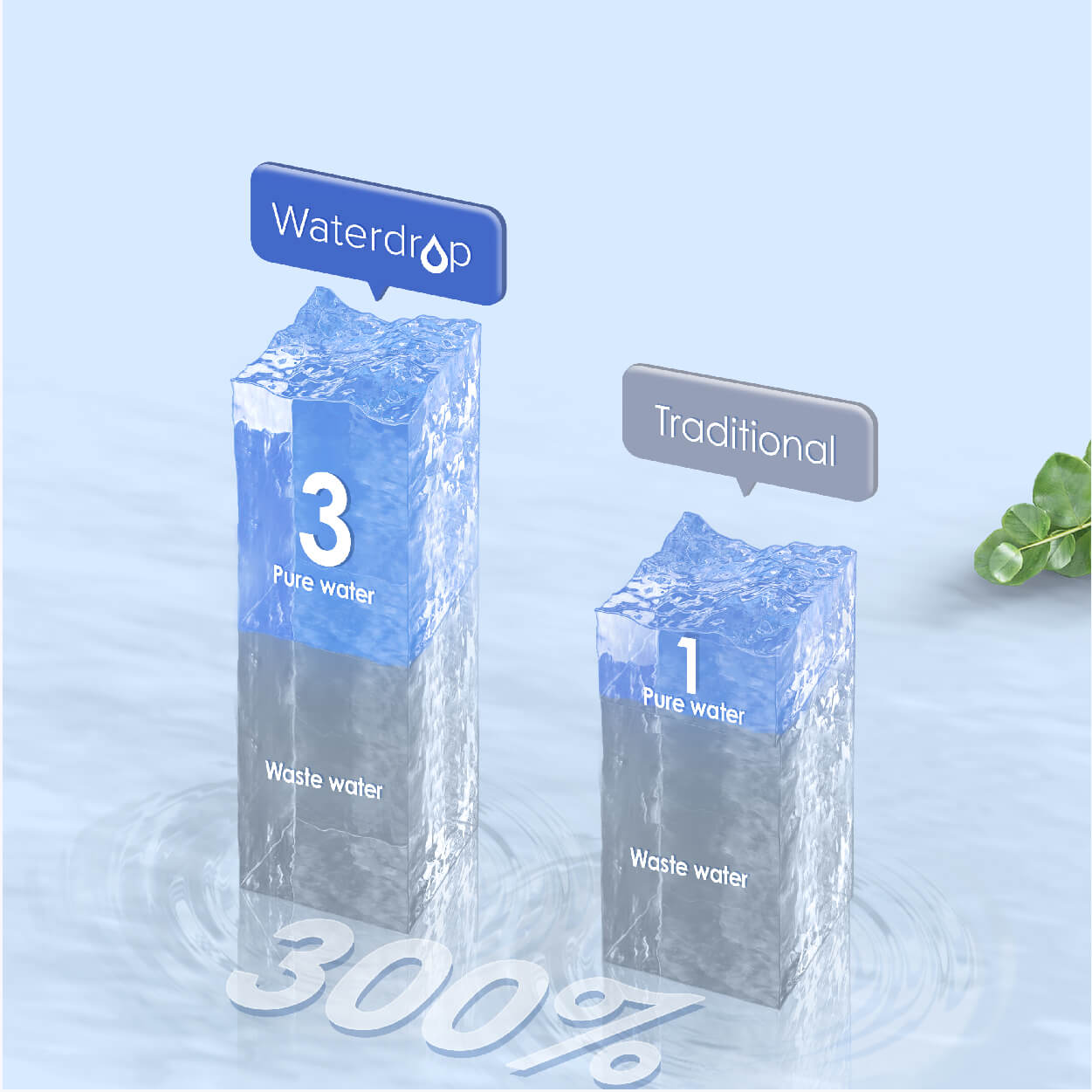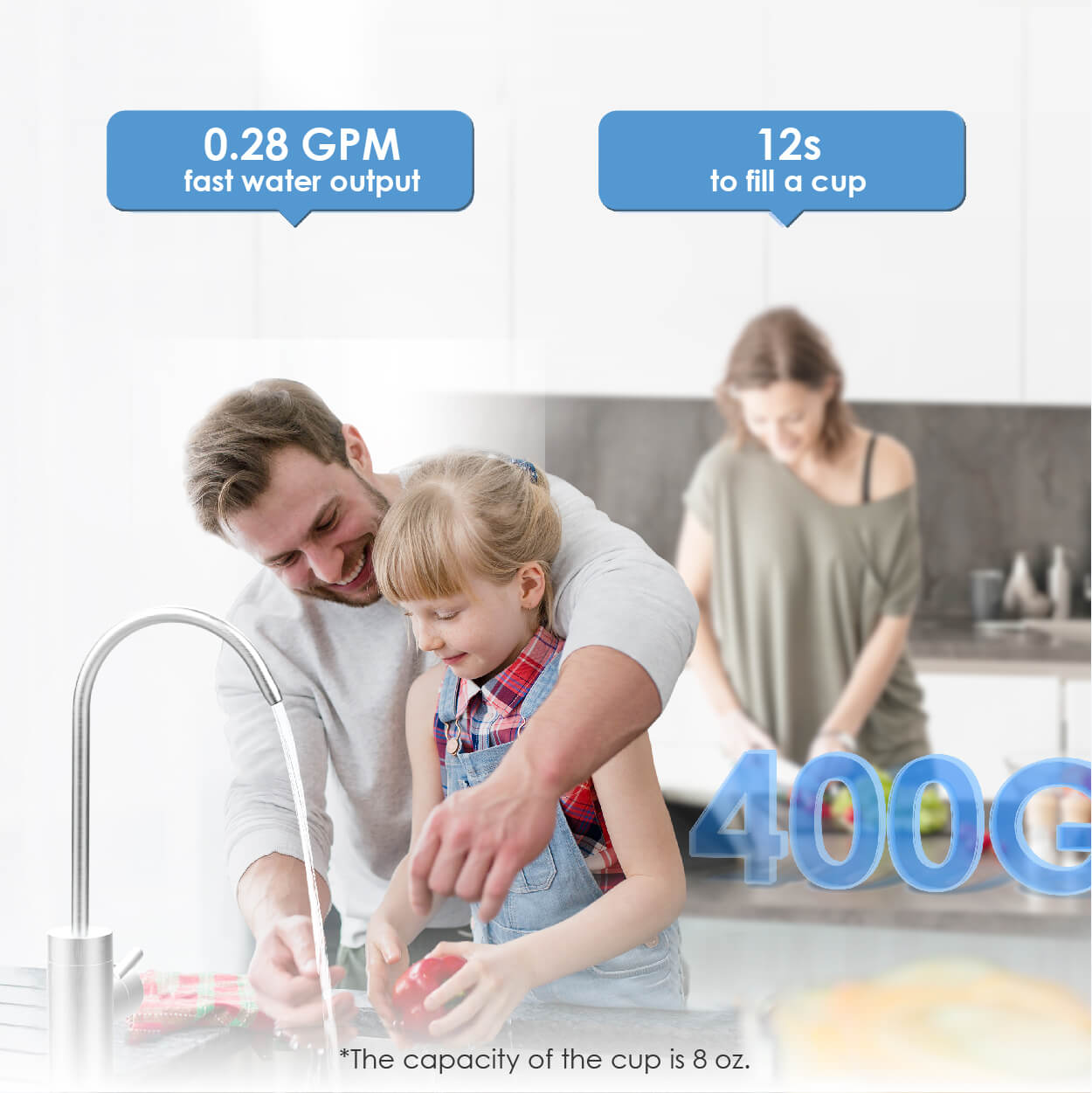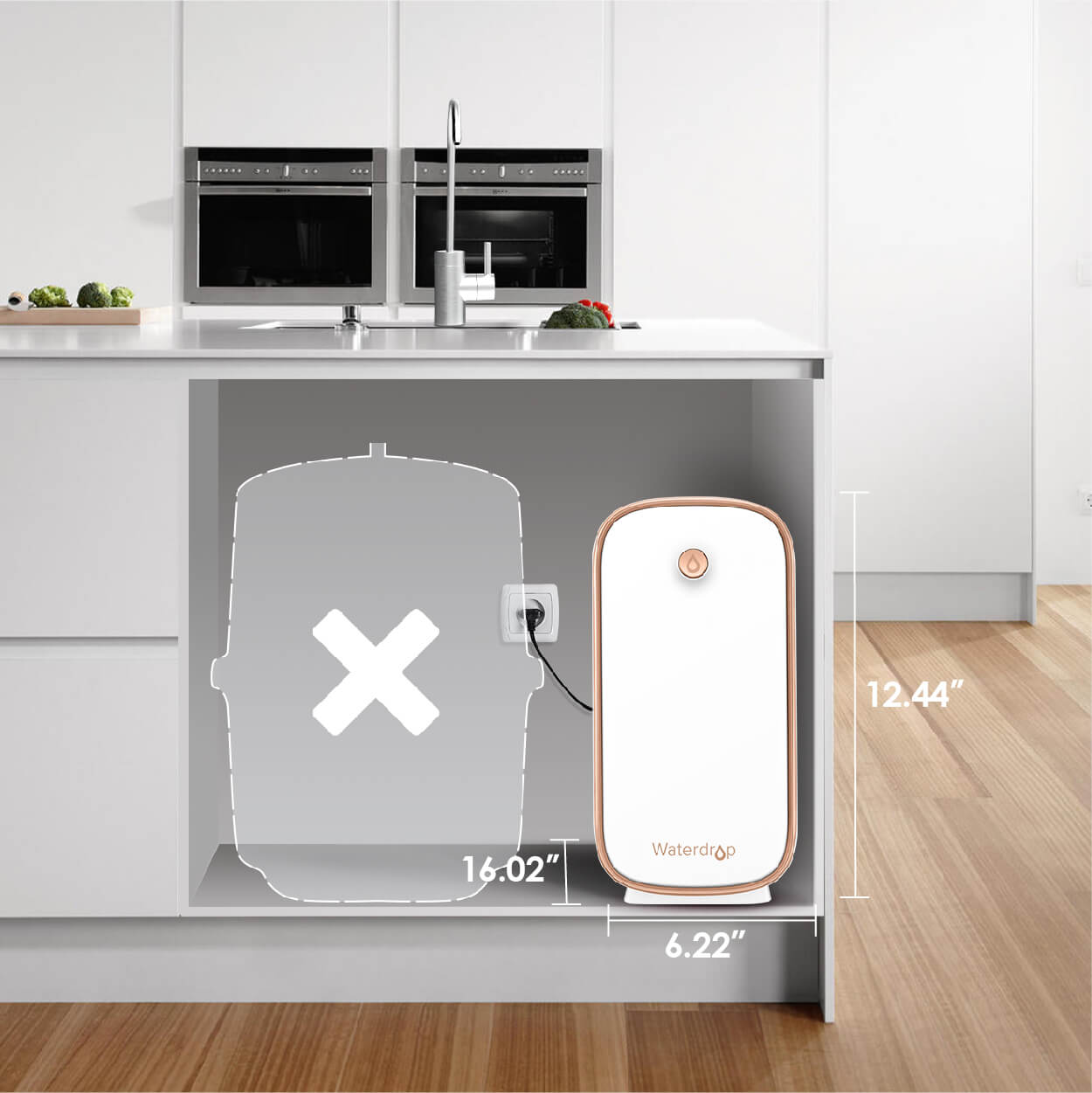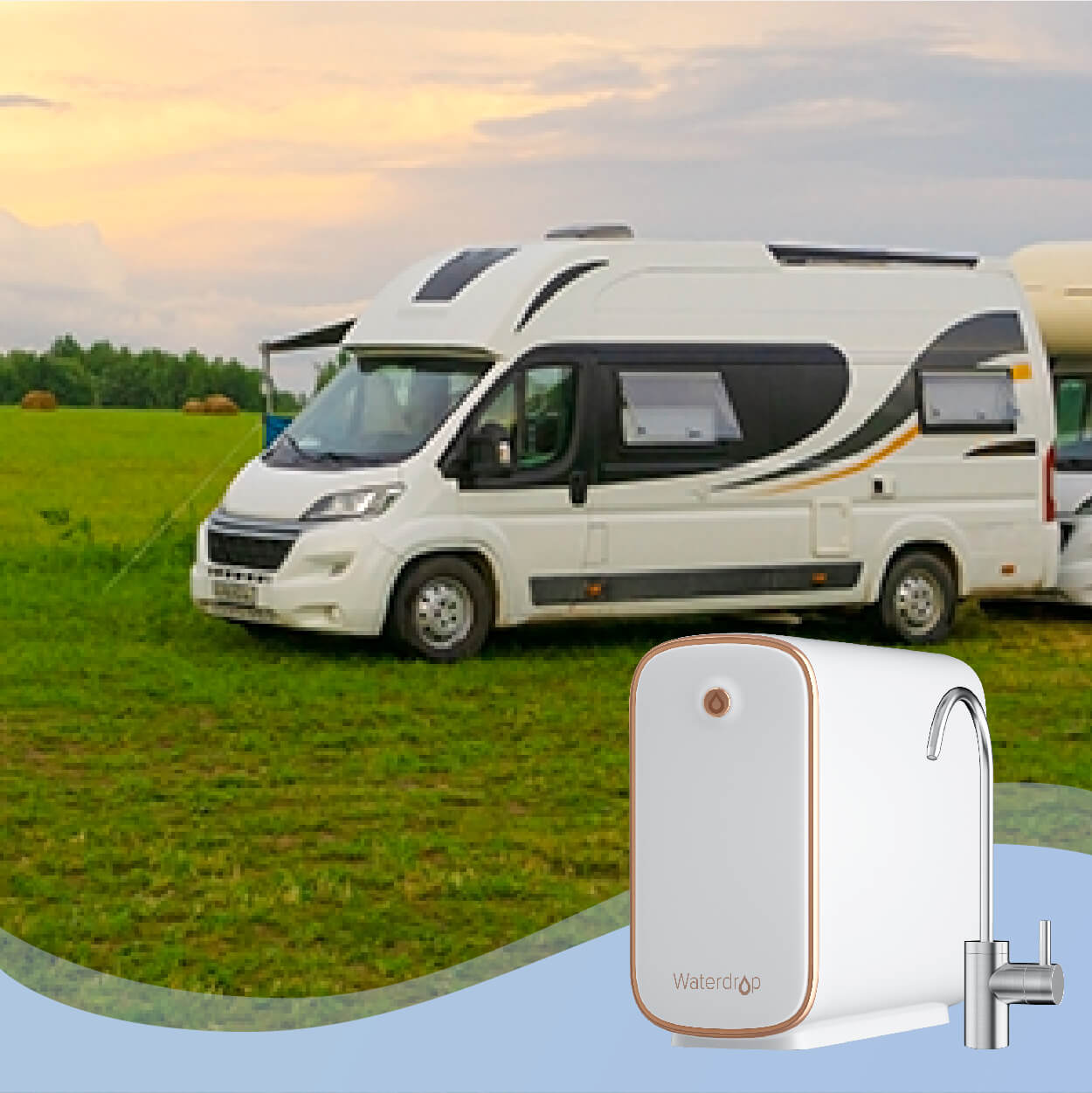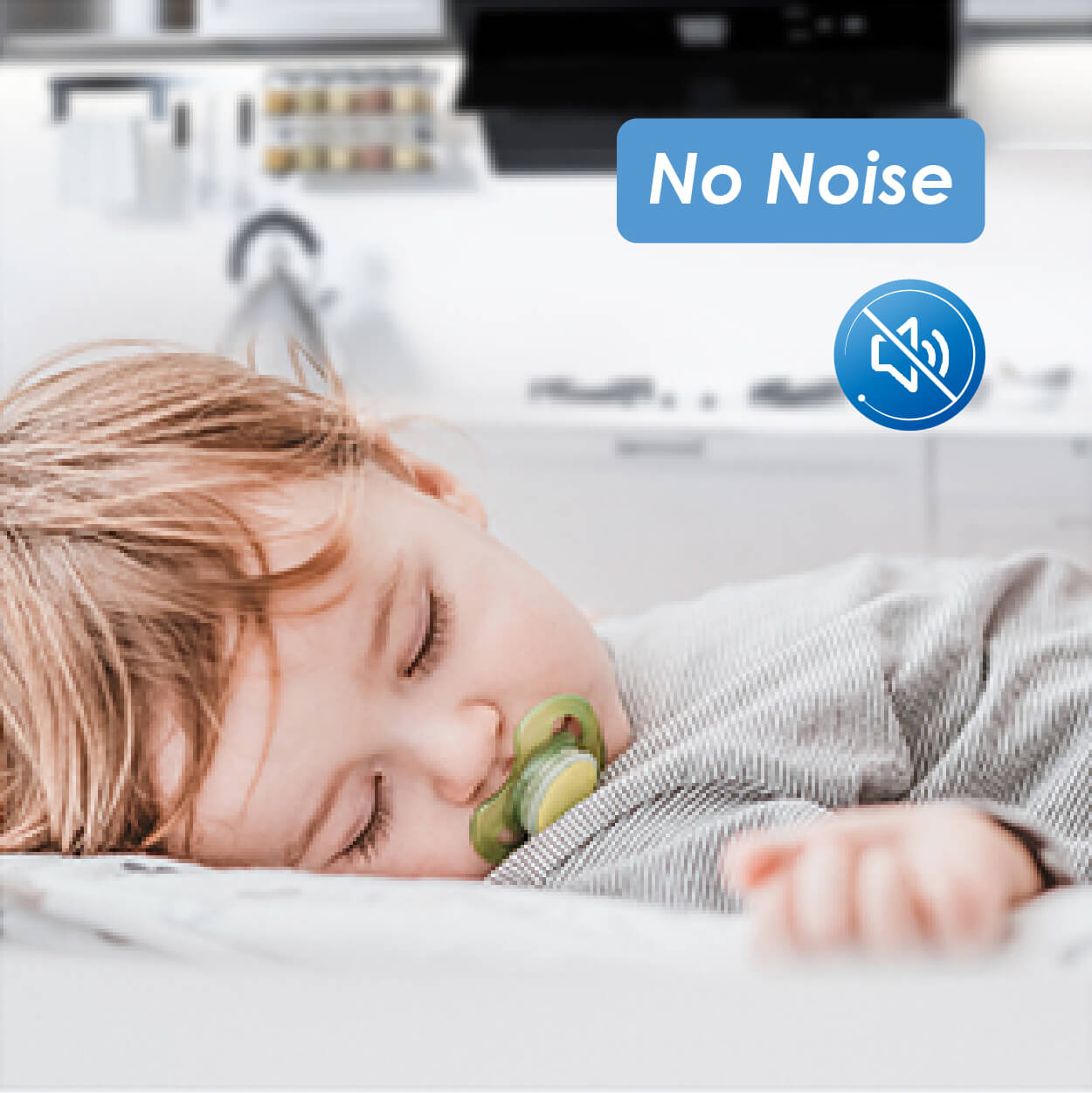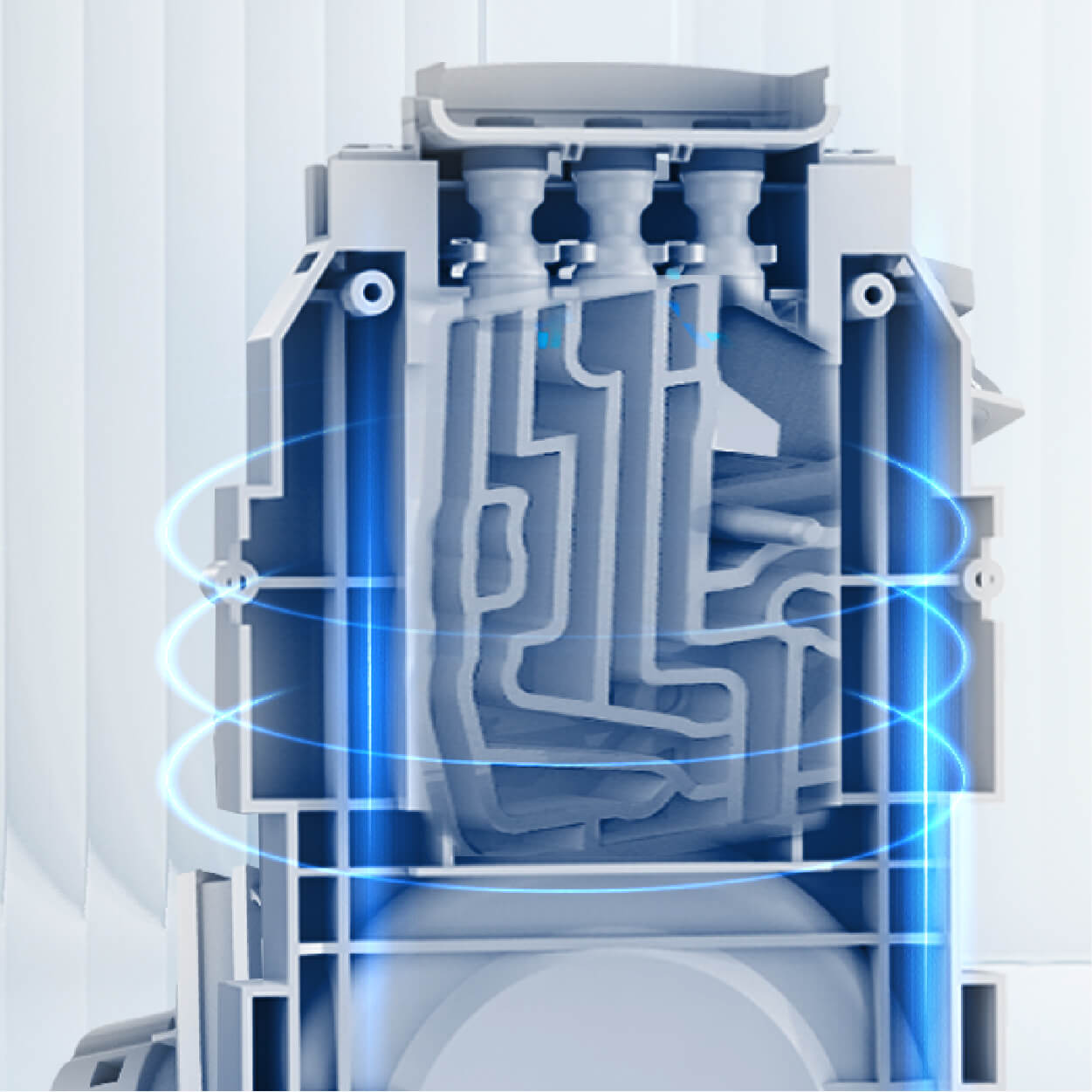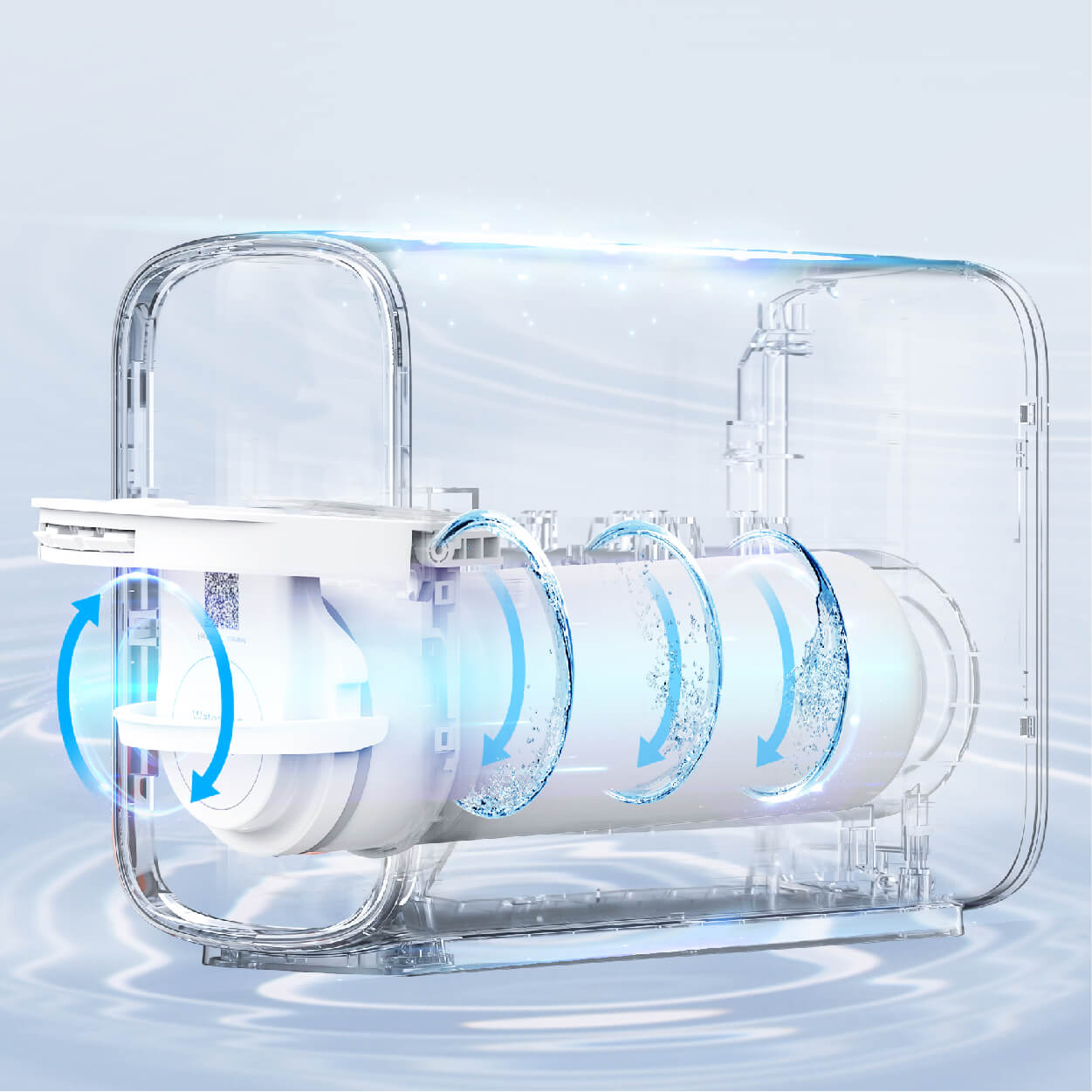How does reverse osmosis system work?
The water supply in your home gets in under pressure, irrespective of
where you live. Reverse osmosis relies on this same pressure to push water through a semipermeable
membrane.
Water passes through the semipermeable membrane under pressure. This leads to the
separation of the impurities from the water molecules. The impurities are on one side of the membrane,
and the water molecules on the other, with the clean water going to your tap without any impurity
whatsoever. There are several filtration stages in the RO water filtration process - up to seven
sometimes, and these are responsible for the high purity of water.
What are the advantages of Waterdrop reverse osmosis systems?
When you buy the Waterdrop D4 reverse osmosis water filtration system, you
are meeting the need for pure water in your household while adding to the beauty of your interior. The
artistically designed housing houses an innovative technology that delivers an excellent filtration
performance by combining multiple filtration materials into a single composite filter.
You only need
limited space to install this tankless reverse osmosis system. Its optimized filtration performance
means it reduces heavy metals, chlorine, and even TDS. This system packs a powerful filtration
performance and an ultra-extended service life despite having a single composite filter.
With just
one filter replacement all year long, this Waterdrop reverse osmosis water filter will serve you with
maximum convenience.
Can I drink reverse osmosis water everyday?
Yes, it is perfectly safe to drink reverse osmosis water frequently. There
are fewer contaminants in the water, so you are safe. The absence of contaminants means you are not
prone to health issues like brain damage or anemic conditions in children. Parasites causing diseases
are also eliminated from your water sources, providing you with clean and pure water.
What is the flow rate of this reverse osmosis water filtration system?
This Waterdrop reverse osmosis system can deliver 0.28 gallons of water in
a minute, conveniently meeting your household water needs.
Does Waterdrop whole house reverse osmosis waste a lot of water?
For a traditional RO system, wastewater production is inevitable. However,
the Waterdrop D4 RO purifier is powered by advanced technology that keeps the drain ratio at 1:1.
Therefore, you can save up to 300% more water than the tanked traditional filter systems. You also spend
less on water bills.
How to install the reverse osmosis home system?
The simple design ensures an easy installation. You can be done in less
than 30 minutes without needing any external help. All you have to do is check the instruction manual,
and if you encounter any problem, watch the installation video on YouTube.
How long does a reverse osmosis filter last?
The integrated filter in this system needs to be replaced once every year.
When to replace the filters of this reverse osmosis system?
You should replace it only once a year, depending on the quality of your
local water.
Can I connect a water softener with this reverse osmosis system?
a. Please note that the water softener is NOT designed to provide
drinkable water. Its main function is to soften the water for washing clothes, taking a bath, flushing
toilets, etc.
b. If a salt-based water softener is installed BEFORE the RO unit:
-The filtered
water could be salty since our unit can only remove 90% salt added by the softener.
-The RO filter's
lifetime could be shortened due to the unusual amount of sodium in the source water, which is NOT
covered by the warranty.
-We have already put a clear warning on the product page regarding this
aspect.
c. If your water softener is NOT salt-based, then our RO unit should work properly with
it.
Can I use this reverse osmosis system in my RV?
Yes, this reverse osmosis water filtration system can work with your RV.
It has an integrated design that makes it possible to install it even in a tiny under-sink space, such
as RVs. You can combine this filter system with your RV for a regular and reliable supply of clean
water.
Now you can stop using the dirty and unsafe water from campgrounds. This filter system
ensures you get clean and pure water for drinking directly from your taps and shower. You are also
immune to the common health issues associated with contaminated water, which may prevent you from
enjoying your road trip.
Is this reverse osmosis water filtration system suitable for well water?
We do not recommend using well water as source for our RO systems.
The
reasons are as follows:
1. Large particles.
Compared to municipal tap water, the well water is
rich of large particles, which will clog the filters easily, and shorten their lifetime
significantly.Please note that the filters will still need to be replaced more frequently, even if you
have added a pre-filtration system.
2. Composition
The well water has very complicated compostion,
and some of them (apart from the large particles) can cause the filter or internal valve to be clogged
and prevent the RO system from normal performance.
3. Water pressure
The well water may not
provide the feed water pressure that the RO system requires (14.5 psi min.). Furthermore, the water
pressure will be even lower after passing through pre-filtration systems.
Do I need to have an electrical outlet under my sink for this work?
Yes, the system requires electricity to work. So, an electrical outlet is
necessary.
Can I connect the remineralization filter with this reverse osmosis water filter?
Yes, this reverse osmosis water filter works perfectly with a
remineralization filter. All you have to do is buy a suitable remineralization filter and connect it to
the system. Simply search for “
Waterdrop
Remineralization Filter” and add the filter.
What does Pure to Drain Rate mean?
The reverse osmosis water filter relies on a semi-permeable membrane to
filter out impurities from drinking water. When the tap water is compressed through the RO membrane, it
produced pure water and waste water. The ratio of pure water to waste water is called wastewater ratio.
1:1 wastewater ratio means 1 gallon water is wasted per 1 gallon purified, and 2:1 wastewater ratio
means 1 gallon water is wasted per 2 gallon purified. The higher the wastewater ratio is, the less
waster water produced during the filtration process. During the use of RO water filter, the actual ratio
might be lower than the labeled, depending on many factors such as water quality, pH, pressure and
temperature.

































































































































